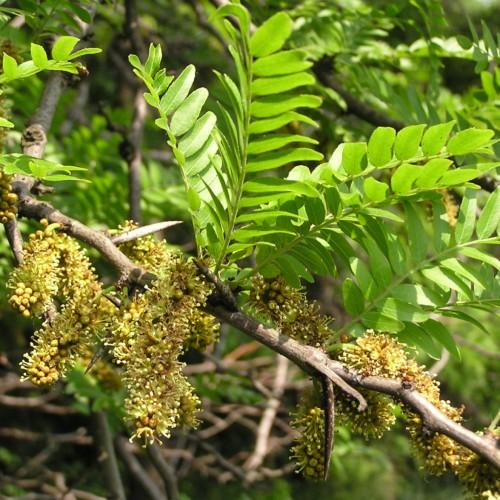
honey locust
Gleditsia triacanthos f. inermis 'Skycole' SKYLINE
Cycle:
Perennial
Watering:
Average
Hardiness Zone:
3 - 8
Flowers:
Flowers In Spring
Sun:
Full sun
Soil:
Well-drained
Fruits:
Fruits In Autumn Ready In Fall
Edible:
Yes
Leaf:
Yes
Growth Rate:
High
Maintenance:
Moderate
Drought Tolerant:
Yes
Salt Tolerant:
Yes
watering
The honey locust (Gleditsia triacanthos f. inermis 'Skycole' SKYLINE) is a drought-tolerant variety of honey locust, making it an excellent choice for gardeners in dry, arid regions. For optimal growth, water your honey locust once a week when the top inch of soil is dry and give it 1-2 inches of water. During hot, dry weather, it will need to be watered more often. In cooler weather, you may need to water your honey locust less often. If the soil is very dry, submerge the root ball of your honey locust in a bucket of water until all the air bubbles stop rising. This will ensure the root ball receives all the water it needs.
sunlight
Honey locust (Gleditsia triacanthos f. inermis 'Skycole' SKYLINE) prefers full sun throughout the day, which means at least 6 hours of direct sunlight per day. It does best when it gets at least 8 hours of full sun per day. The sun should shine directly on the crown of the tree in order for it to grow and achieve its maximum height. When planted in partial shade, the tree will remain smaller and will lack its unique form. Therefore, when growing this species, it is best to select a sunny spot in the landscape.
pruning
Prune Honey Locusts ('Skycole' SKYLINE) in mid- to late spring, as soon as it reaches 6 feet in height. Prune the main branches in a single-leader form, cutting back lateral shoots to the main leader.Somtimes a light pruning (about 1/3 of growth in a single season) may be appropriate for proper form. Keep the top of the tree thinned out so that light can reach into the center of the tree.Remove lower branches that interfere with lawn mowing and prune for clearance from sidewalks and drives. Annual pruning is recommended to keep the canopy open and allow light penetration. Prune out any dead or diseased wood to keep the tree healthy.
